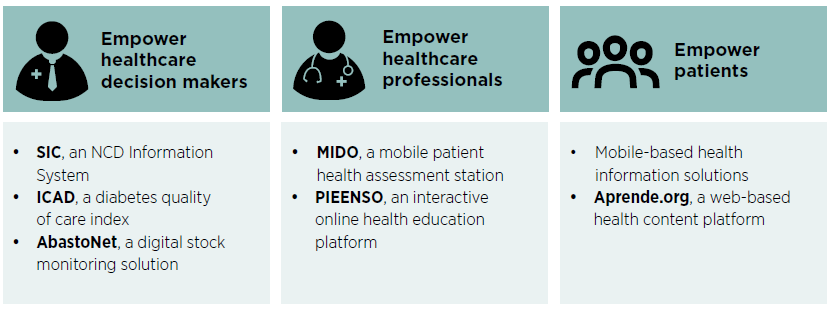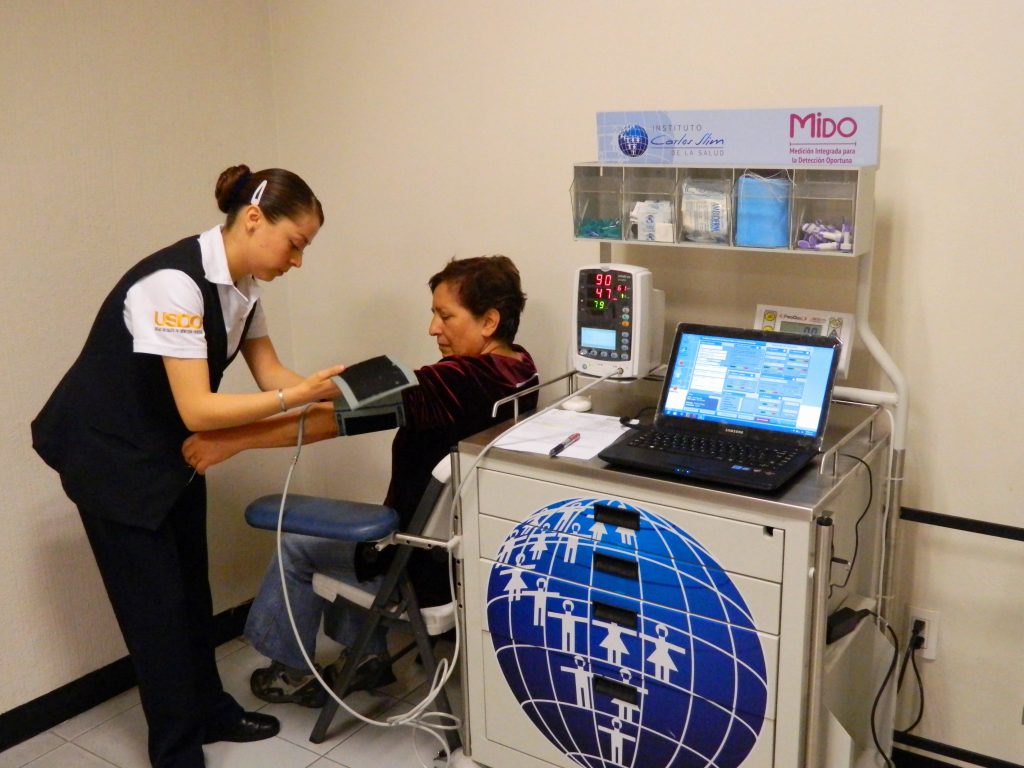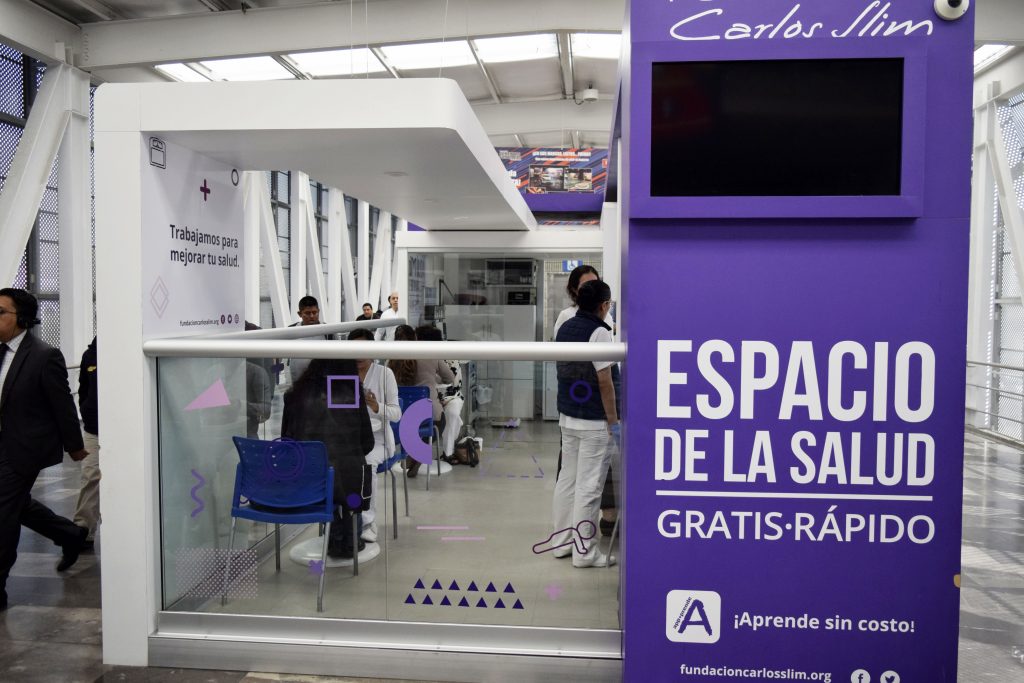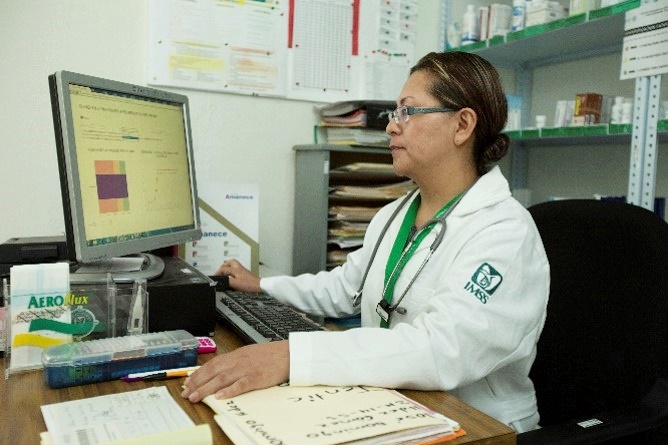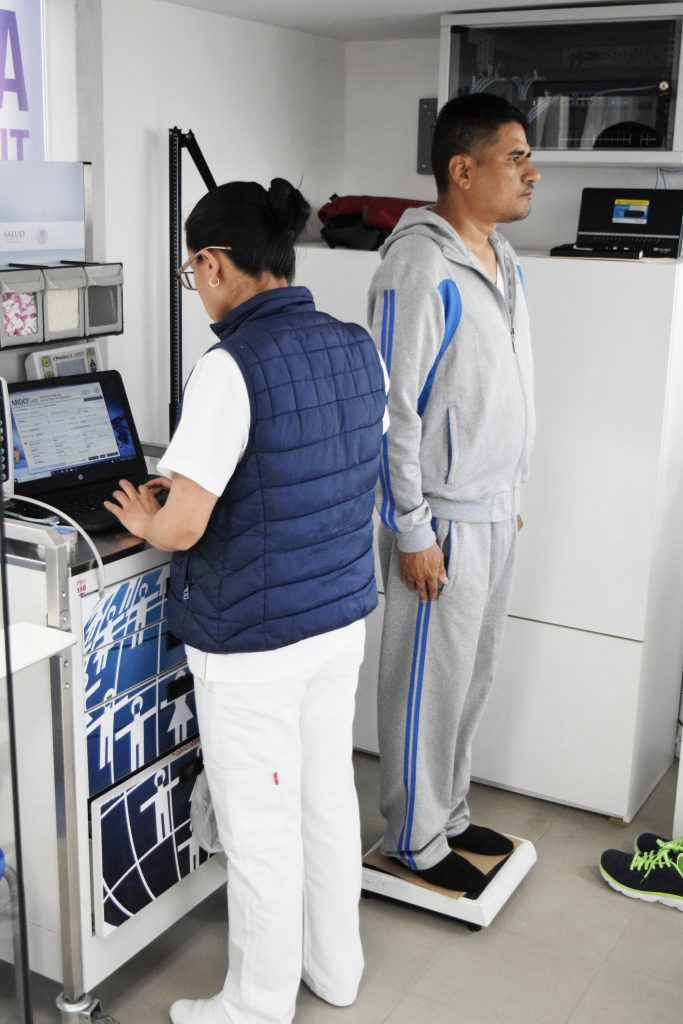In September 2018, I wrote a blog on Carlos Slim Foundation’s (CSF) work in digital health in Mexico. At that time I provided an overview of Mexico’s mobile and health landscape shedding light on the opportunity for digital solutions to be leveraged for health systems strengthening. In response to the growing burden of NCDs, The Ministry of Health (MoH), together with CSF implemented CASALUD. CASALUD is a comprehensive digital health solution that is re-engineering healthcare delivery for effective prevention and management of NCDs. The system empowers healthcare decision makers and professionals, and provides information and support to patients and their families.
The suite of CASALUD solutions
MIDO: a novel patient health risk assessment solution incorporating a “pre-disease stage” patient categorisation
While CASALUD includes a range of digital solutions, in this blog I will be expanding only on one of them: MIDO (Medición Integrada para la Detección Oportuna or Integrated Measurement for Timely Detection). MIDO is available in either a physical mobile cart or a more portable backpack format. MIDO integrates patient health assessment equipment and a digitised patient health-screening questionnaire with a built-in decision support algorithm for HCPs.
Pre-disease stage patient categorisation
MIDO screening enables enhanced detection of patients at risk of developing a chronic condition, as well as those with undiagnosed chronic diseases. MIDO patient screening incorporates a novel “pre-disease stage” of patient categorisation as opposed to the traditional patient diagnosis of either “healthy” or “sick”.
As of November 2018, over 1.1 million individuals have been screened by healthcare professionals (HCPs) using MIDO modules. Thirteen per cent of those who would have previously been classified as healthy were identified as pre-diabetic. An additional six per cent of this screened population had undiagnosed T2DM.
Both groups of individuals were informed of their health status and included in relevant lifestyle counselling or treatment programmes. For at risk patients, this was to proactively prevent the development of diabetes, while for newly diagnosed patients the focus was on preventing the progression of diabetes.
Health risk assessment conducted in one place
Further, MIDO Mobile Carts enable patient health risk assessments to be conducted in one place, in any part of a primary health centres (PHC). This convenience allows for random selection and screening of all individuals in the PHC, even those who appear to be healthy or those who have not actively sought care. A research study revealed that 24 out of 60 individuals who were screened using MIDO Mobile Carts at PHCs had not visited the PHC with the intention of participating in a health risk assessment. These individuals would therefore not have been screened if MIDO had not been available.
The location of MIDO clinics in accessible public spaces is driving increased patient attendance of follow-up consultations
PHCs are often inconveniently located for general public access. Positioning MIDO satellite clinics within major transport hubs increased accessibility for patients who can simply include clinic visits as part of their daily commute. The patient follow-up consultation attendance rate at the MIDO clinic in Cuatro Caminos Transit Station, a major transport hub in Mexico City, was 11.7 per cent. Although there’s still room for improvement, this is significantly higher than the typical 3.9 per cent follow-up attendance rate at a PHCs that are not usually located near transport hubs.
Reaching diverse population with MIDO Backpack version
CSF went one-step further in order to address the problem of low percentage of male screenings and created the MIDO Backpack version. Insights from the research indicate that by enabling remote screening in community spaces and households, MIDO screening is reaching a more diverse population. Analysis of data from both PHC-based screenings and community and household screenings using MIDO backpacks revealed a higher proportion of male patients in the remotely screened sample (33 per cent) compared to those screened in PHCs (25 per cent).
CASALUD is improving NCD outcomes in Mexico
While the journey was not without challenges, it is remarkable to share some of CASALUD’s results:
- In 2013 Mexico’s Ministry of Health fully endorsed and incorporated CASALUD in Mexico’s National Strategy for the Prevention and Control of Overweight, Obesity and Diabetes.
- As of 2019, the CASALUD disease management information system (SIC) is operating in over 12,450 PHCs, with data from 1.8 million patients available in real time for decision makers.
- Since 2009, over 20,000 HCPs graduated from the MOH-certified NCD prevention and management courses offered on PIEENSO.
- Enhanced screening by MIDO was made possible for over 1.1 million individuals, enabling for the first time follow up of patients in pre-disease phase.
Since the implementation of these solutions there have been some significant improvements in national health outcomes:
- National A1c test coverage has risen by 40 percentage points
- The number of patients with controlled diabetes has increased by eight percentage points
- Improvement in patient perception of quality of care (19%), disease knowledge (5%) and self-care practices (15%)
- Mexico’s national Diabetes Quality of Care Index rating has increased from 58.7 in July 2016 to 67.6 in October 2018
These are only a few of the highlights from my research days in Mexico. I would like to encourage you to read more in the full case study here. We appreciate that each component within CASALUD deserves its own case study. However, we believe that presenting it together, as a holistic solution, provides a strong case for adopting a systems approach to implementing digital solutions over implementing solutions in silos. This case study also demonstrates the value of placing patients at the centre of the care model.


